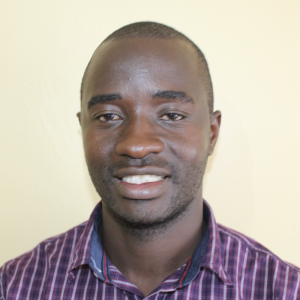Musasa Community is rural, peaceful, and highly vegetated. Most of the buildings in the area are semi-permanent, mud-walled houses, and the majority of inhabitants here practice mixed farming on a small scale. They plant maize, beans, pumpkin, a few tea bushes, bananas, and trees which are sold as firewood. For a long time now, Musasa has been quite neglected and disconnected from basic social amenities like water, roads, and electricity.
Thus, the elites from the area have resorted to resettle elsewhere, where they can enjoy good transportation and communication facilities. This kind of neglect and brain-drain has robbed both the school and the village from the opportunity to rise above the poverty level. To date, water scarcity and poverty are still the biggest problems faced by people here, hurting the school and community in a vicious cycle.
At Musasa Primary School, noise is only heard from children when they are either playing during games or break times or in the evening when they are released to return home. Musasa Primary School was founded long ago, in 1920, and there is an old man born in 1932 who says he actually grew up learning there. He calls the school the pride of the village. Both the village and school grounds are predominantly marked by rocks, which the school children like to sit on to bask in the sun on their breaks.
Some positive changes are beginning to happen here. Recently, Musasa community members joined hands and opened a road that has now made the school accessible by both vehicles and motorbikes. The school's performance, though still dwindling, has stabilized a bit in the last three years. Additionally, the school population has grown - albeit slowly - through the years until its current standing at a total of 323 pupils and teachers.
The school routine starts at 7am and ends late at 5:30pm from Monday to Friday. Each day starts by attending morning preps and ends by cleaning the classrooms or evening preps for classes that go from 6pm-8pm. Except for Mondays and Fridays when they attend the assemblies to be briefed by the teachers in the morning, the rest of the day involves attending class lessons and breaking for lunch or games.
It is during the breaks that pupils are sent to collect water from Amiga Spring, which is about 1km away from the school. The path leading to the spring is rocky, bushy, and hilly, making it unsafe and very tedious for the children to travel. Back at the school, there is a small rainwater catchment tank to collect the water pupils fetch, but the tank often goes unfilled as students prioritize the water they collect to put towards the school's immediate cooking, cleaning, and personal consumption.
Because Amiga Spring is the only water source for all of Musasa, one is not certain how long the students will take to collect water and come back. This has led to a lot of time wasted on the part of the learners. Competition over the water is also embarrassing to the pupils because they have to struggle with other community members, including their own parents, before getting water.
Teachers have noticed that some pupils still collect water from dirty sources, apart from the spring, so that they don't have to struggle at the spring. These anomalies have contributed to diarrhea, flu, and stomach upsets among the learners and teachers who use such water, causing the school and families to spend a lot of money on medical treatment. All of the containers used to collect water are without cover lids and visibly dirty, exemplifying that water consumed is not clean or safe at all. Furthermore, the school suffers more during the dry season when the spring goes dry. Cleaning and handwashing are constant problems due to lack of water, and the students have to persevere with thirst until they get to the spring.
"Personally, I wouldn't dare to drink water from the spring," Field Officer Mr. Erik Wagaka said.
"The area around the spring is marshy and very unkempt. The discharge pipe is rusted and there is no surety that the water quality is good. The teachers said that at times, pupils complain of sore throats after drinking the water from that spring."
The school does have some latrines, but due to the lack of water they are only washed once a week and there is no water nearby for handwashing.
"This leads to diseases like flu due to uncleaned classrooms and stomachache...Lack of enough water has affected the growth of the school population and has contributed to the fluctuation in performance...We cannot afford to clean the classrooms and latrines as we ought to," said Headteacher Mr. Boniface Yidah Mujivane.
"It also interferes with the school feeding program because food preparation cannot be prepared on time when water is lacking. Sometimes pupils bring dirty water that cannot be used for cooking or drinking purposes. The constant breaking of class lessons in search of water discourages teachers who would want to do their best in teaching."
What we can do:
Training
Training on good hygiene habits will be held for two days. The facilitator will use PHAST (participatory hygiene and sanitation transformation), ABCD (asset-based community development), CTC (child to child), lectures, group discussions, and handouts to teach health topics and ways to promote good practices within the school. The CTC method will prepare students to lead other students into healthy habits, as well as kickstart a CTC club for the school.
Handwashing Stations
There is currently nowhere for students to wash hands after using the latrines or before eating lunch.
This CTC club will oversee the new facilities, such as handwashing stations, and make sure they are kept clean and in working condition. The two handwashing stations will be delivered to the school, and the club will fill them with water on a daily basis and make sure there is always a cleaning agent such as soap or ash.
VIP Latrines
Two triple-door latrines will be constructed with local materials that the school will help gather. Three doors will serve the girls while the other three serve the boys. And with a new source of water on school grounds, students and staff should have enough to keep these new latrines clean.
Rainwater Catchment Tank
A 50,000-liter rainwater catchment tank will help alleviate the water crisis at this school. The school will also help gather the needed materials such as sand, rocks, and water from the spring for mixing cement. Once finished, this tank can begin catching rainfall that will be used by the school’s students and staff.
We and the school strongly believe that with this assistance, standards will significantly improve. These higher standards will translate to better academic performance!

 Rainwater Catchment
Rainwater Catchment
 Rehabilitation Project
Rehabilitation Project



































